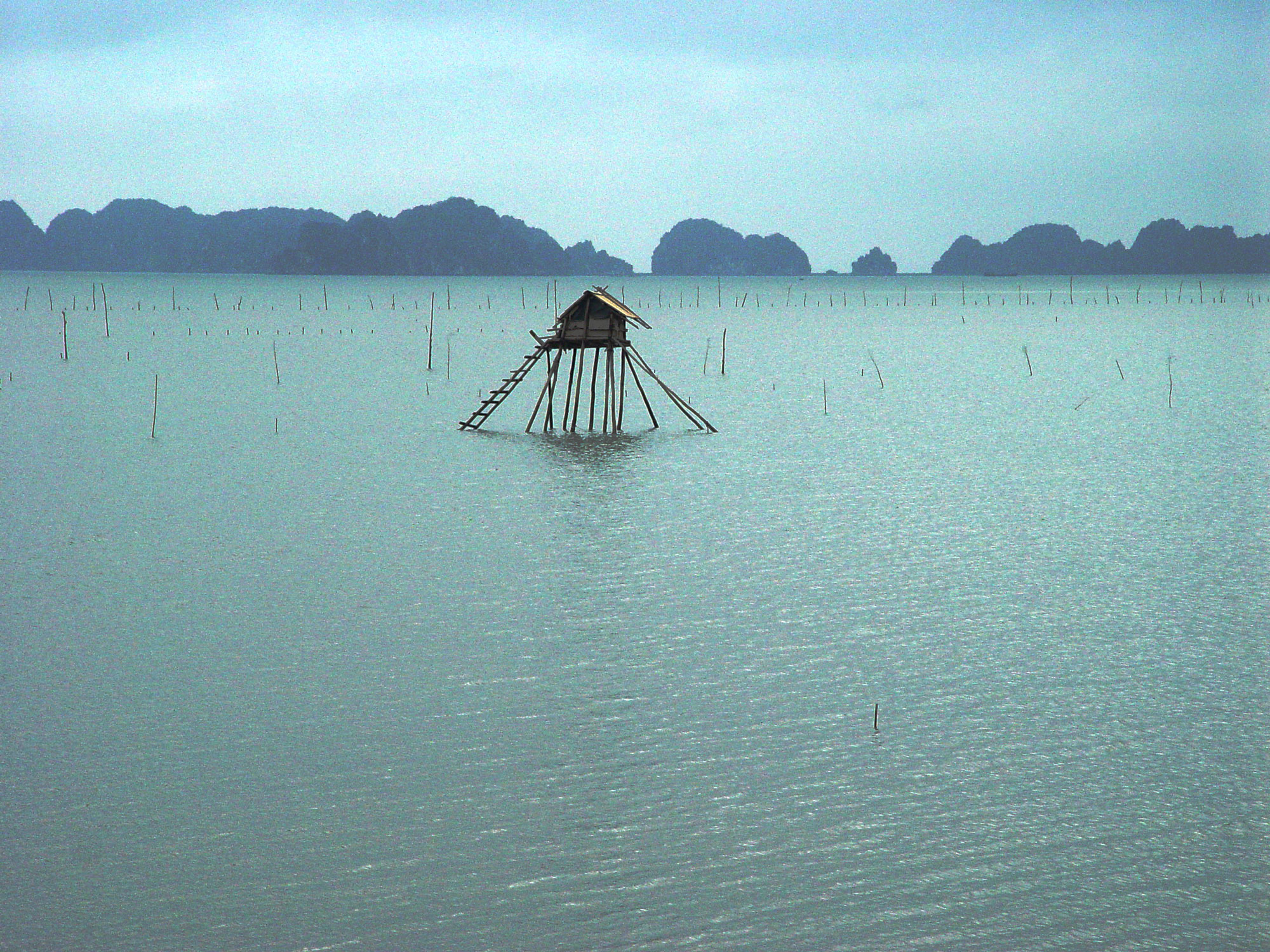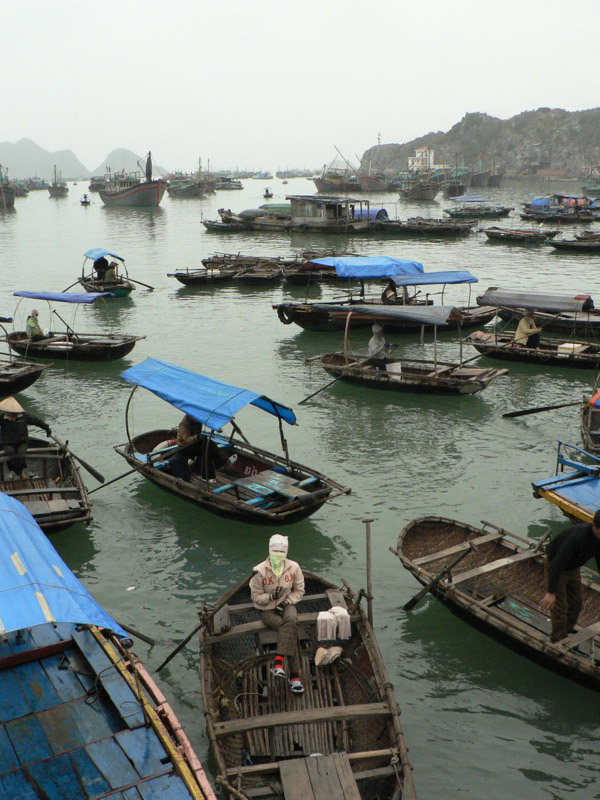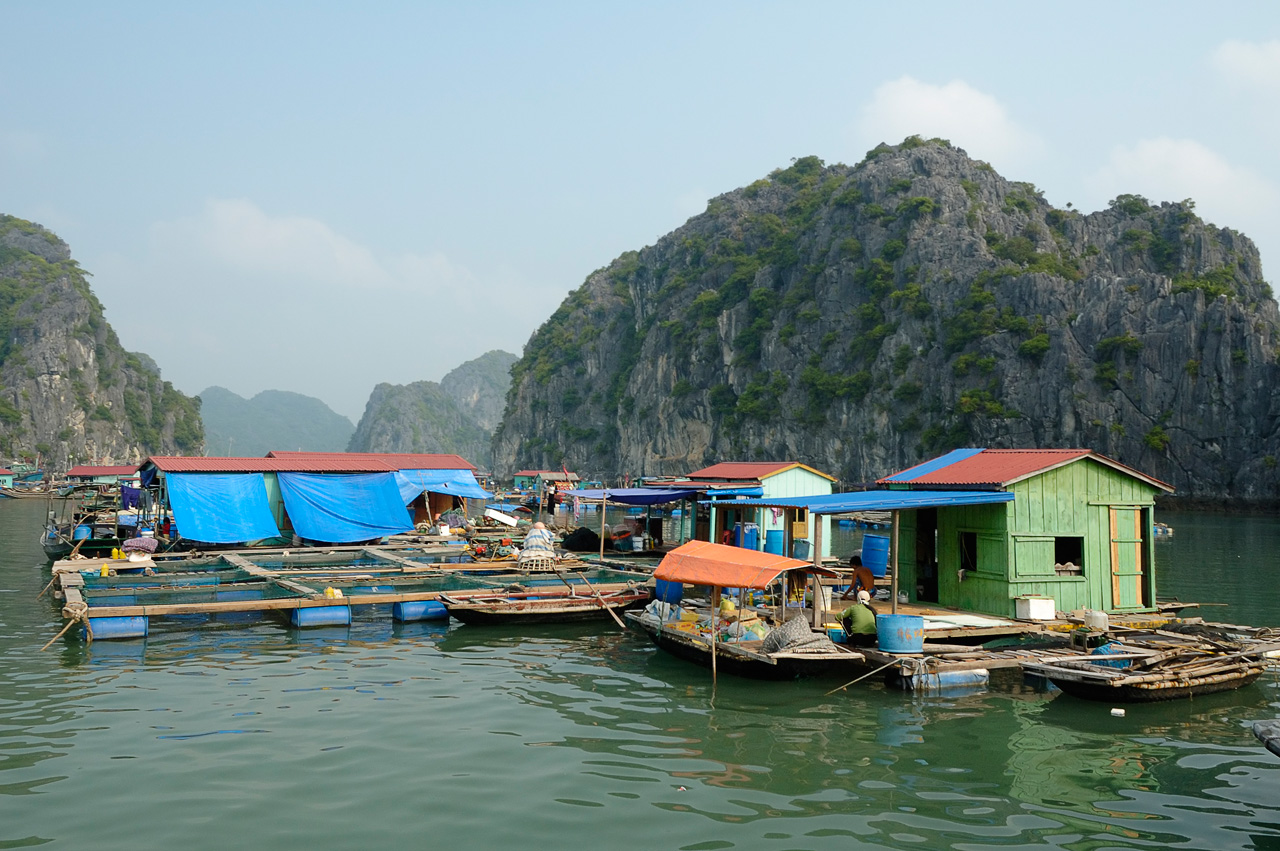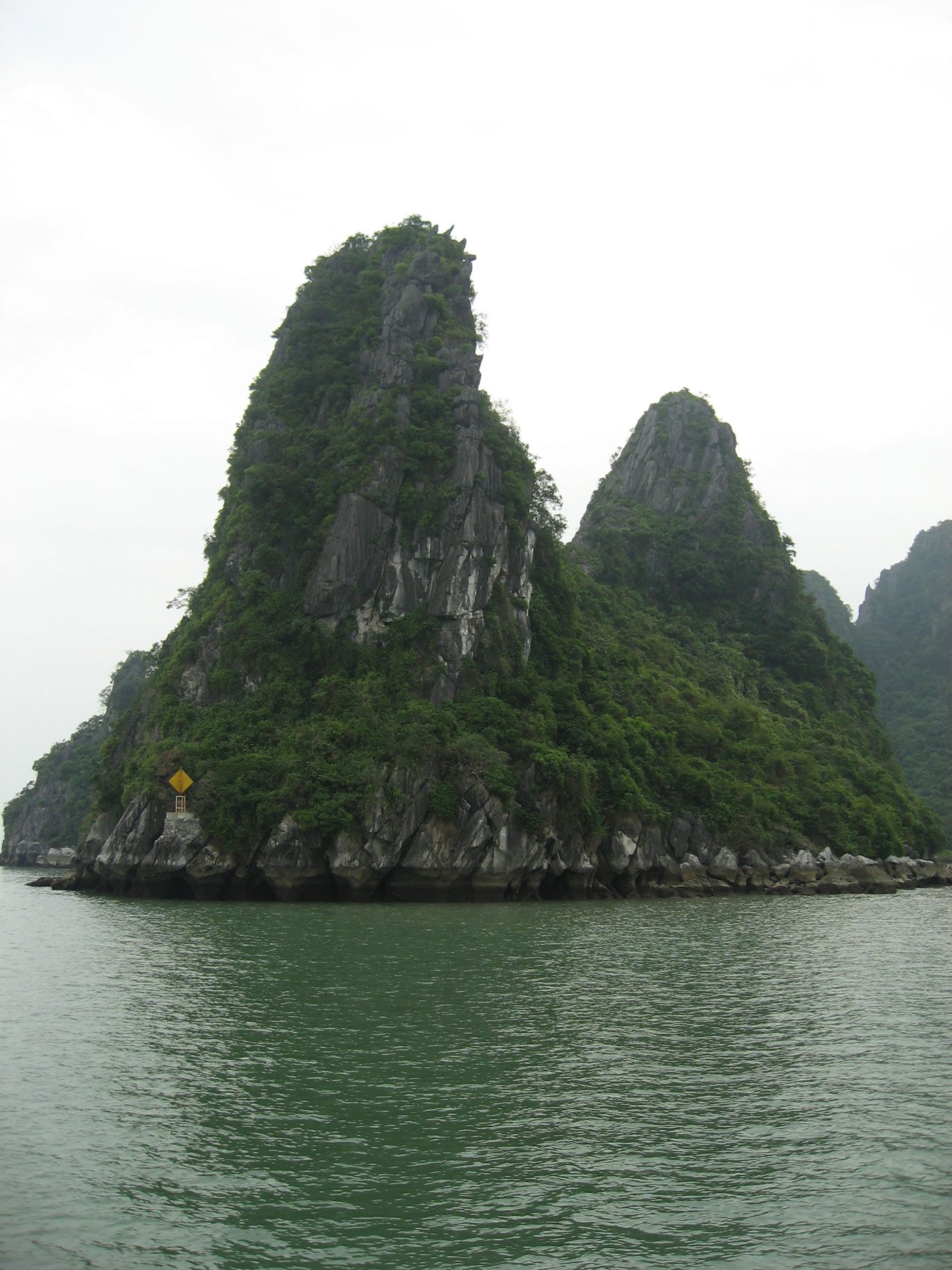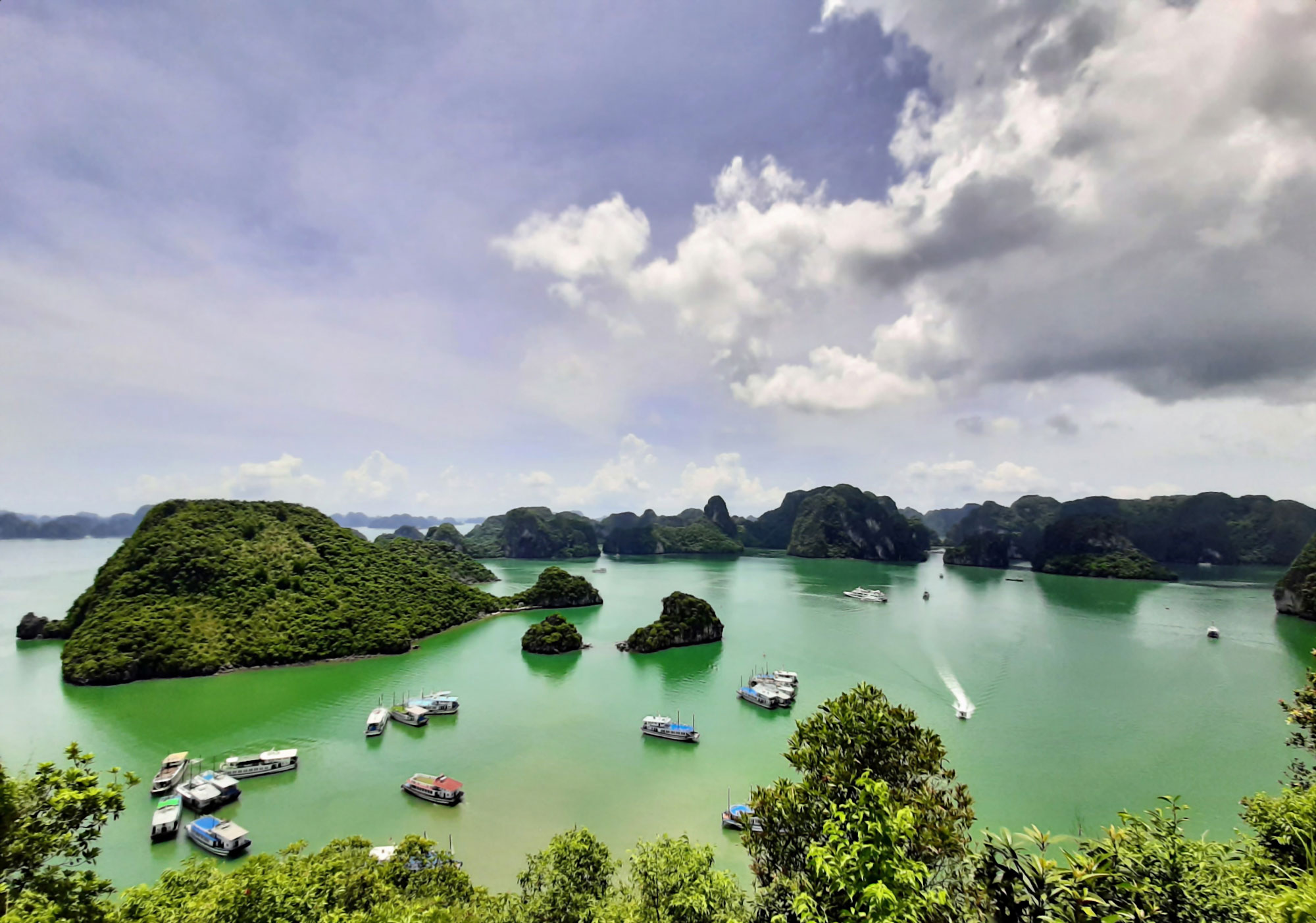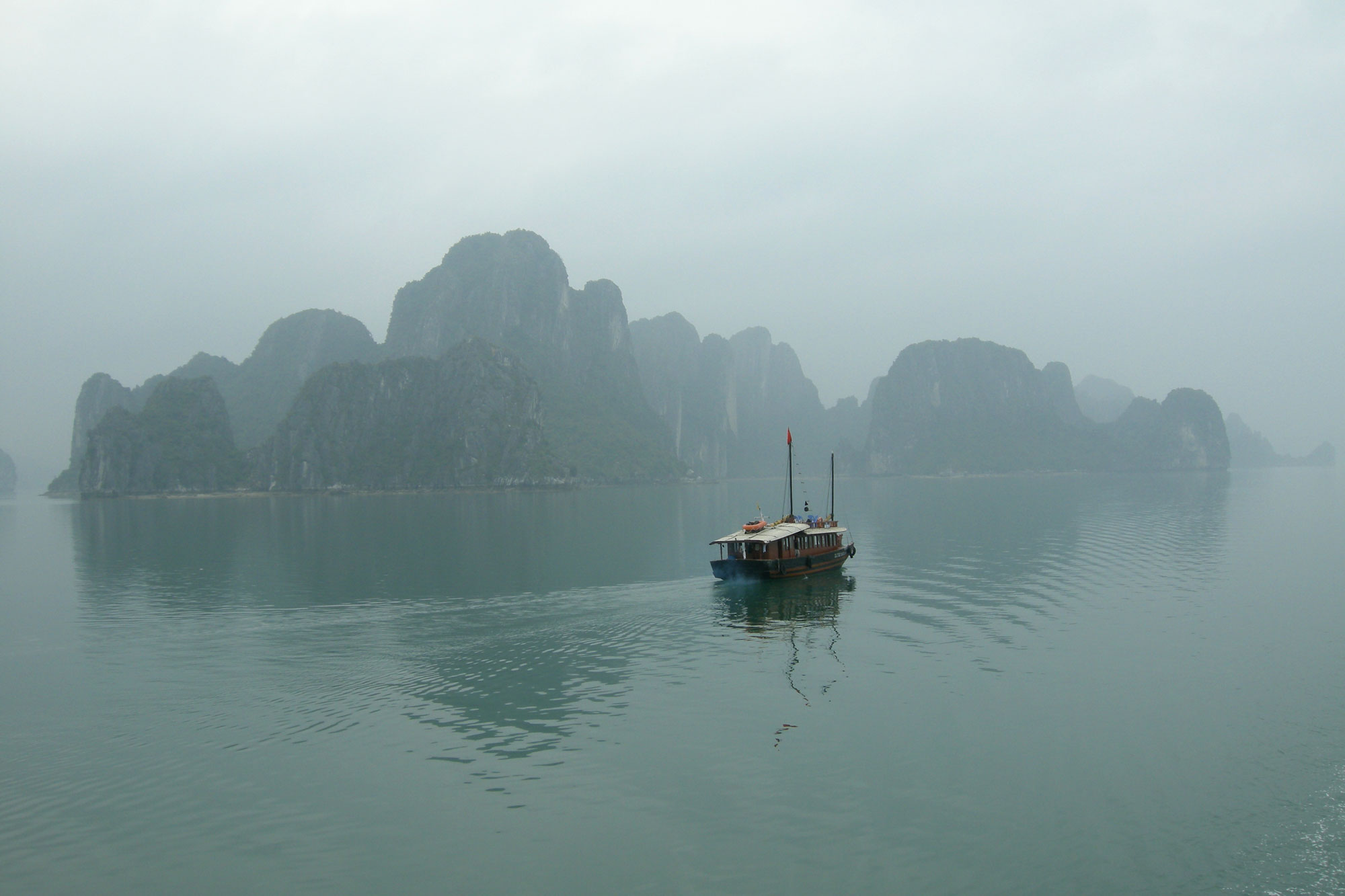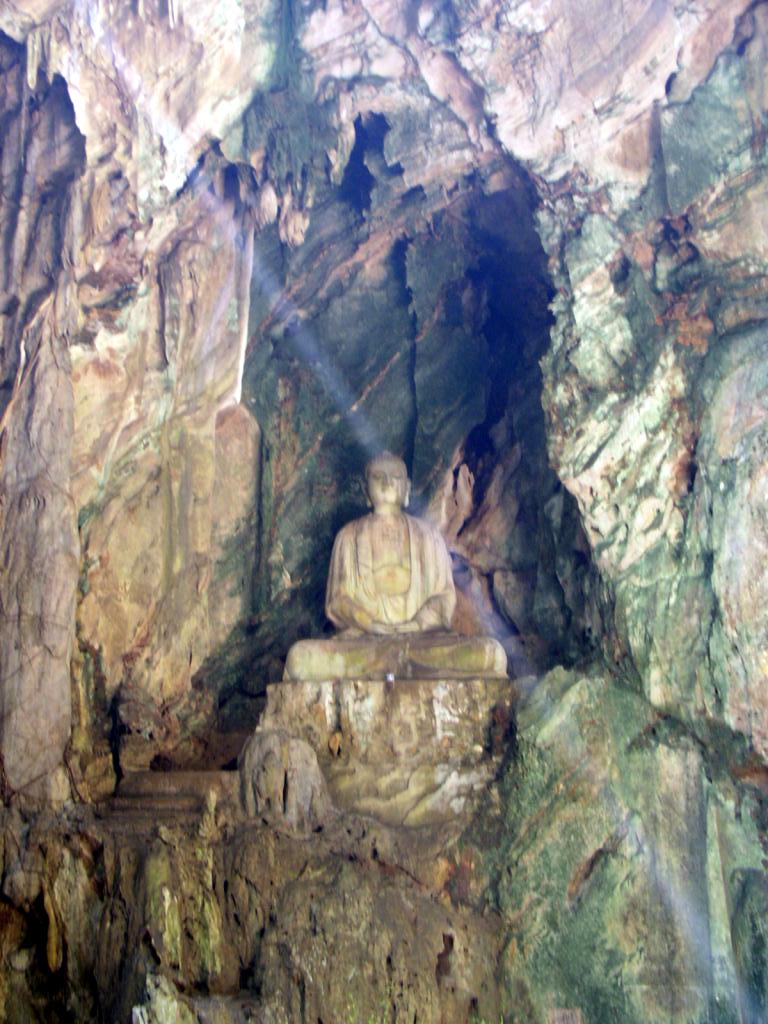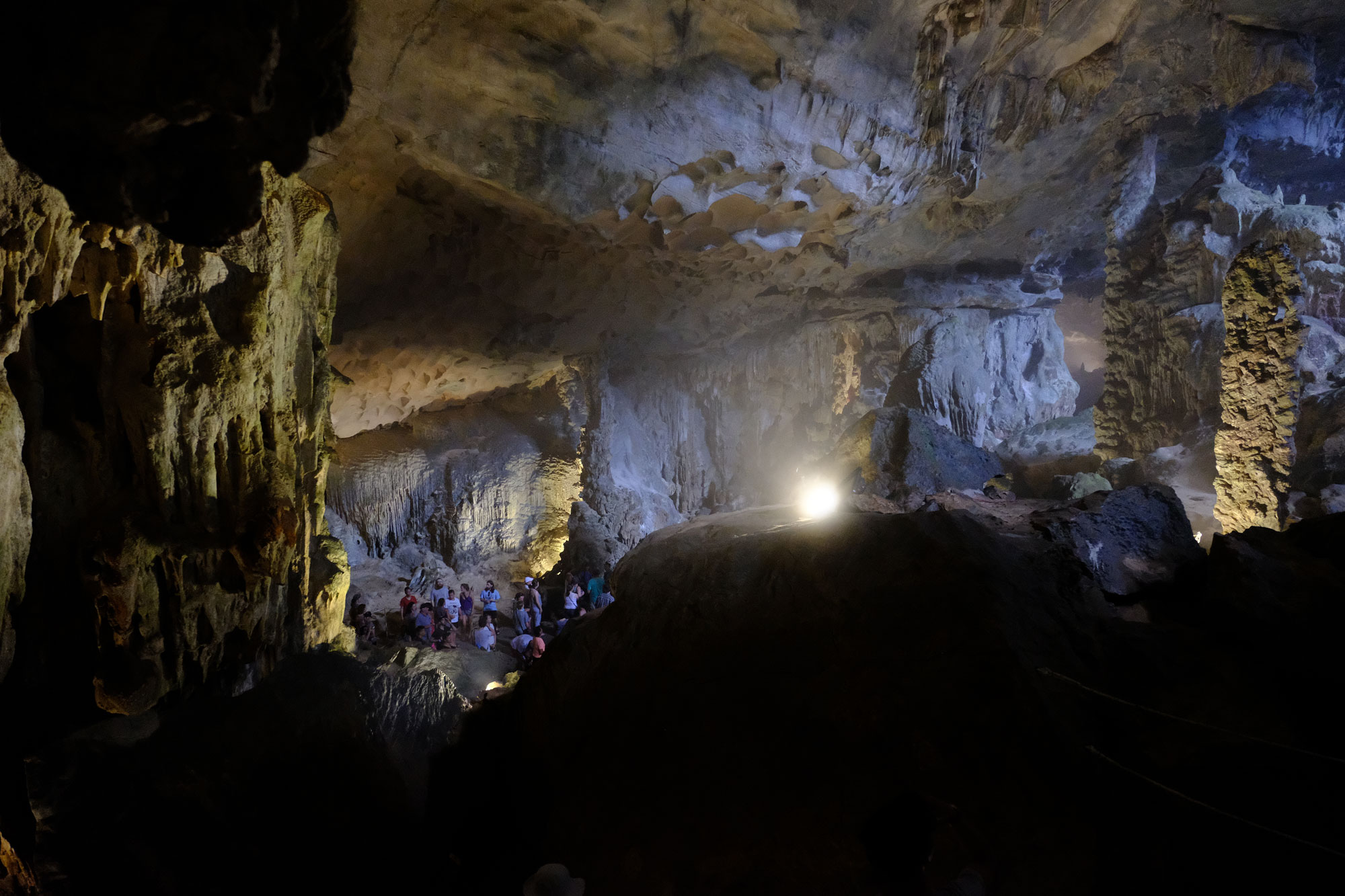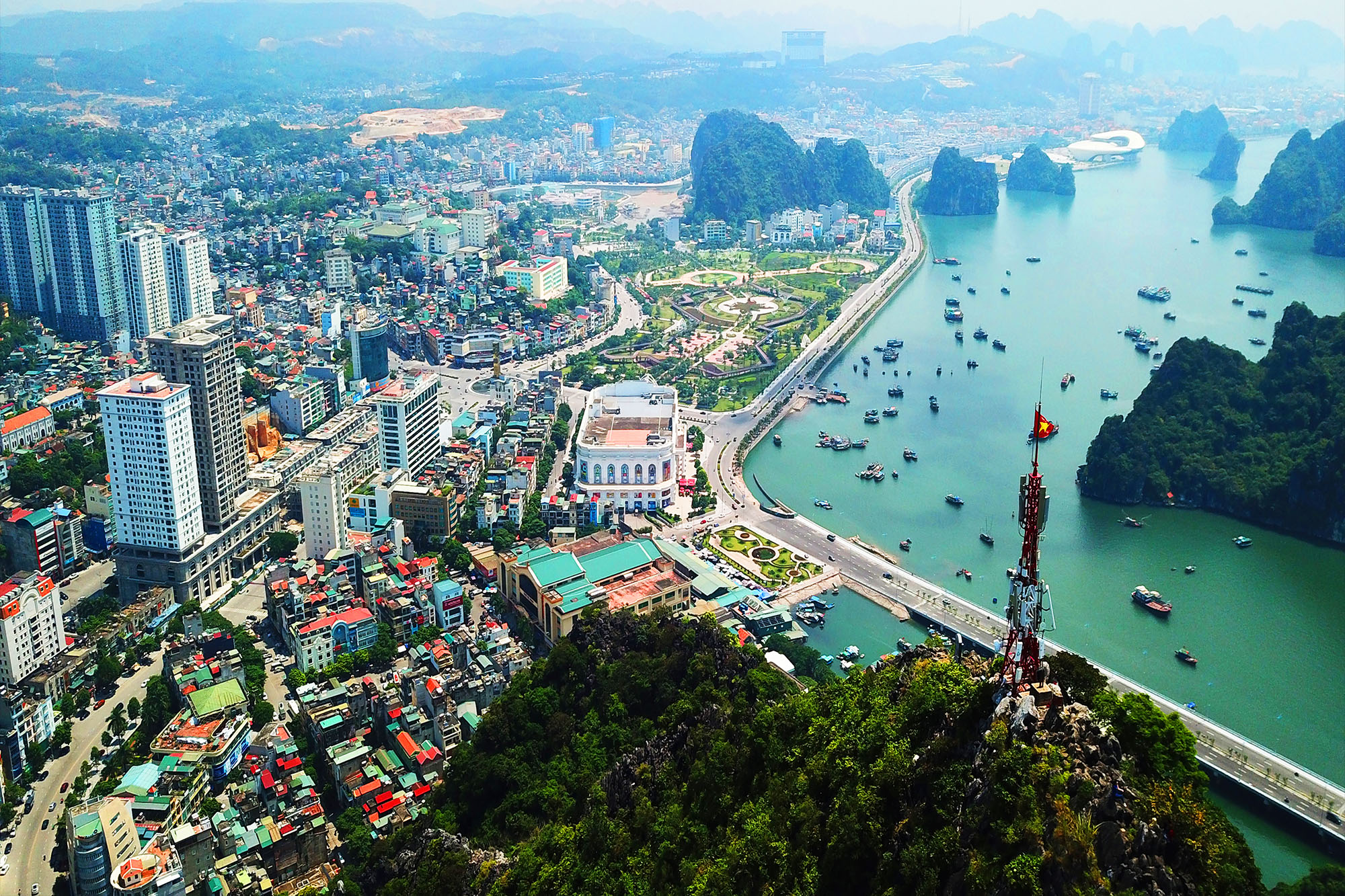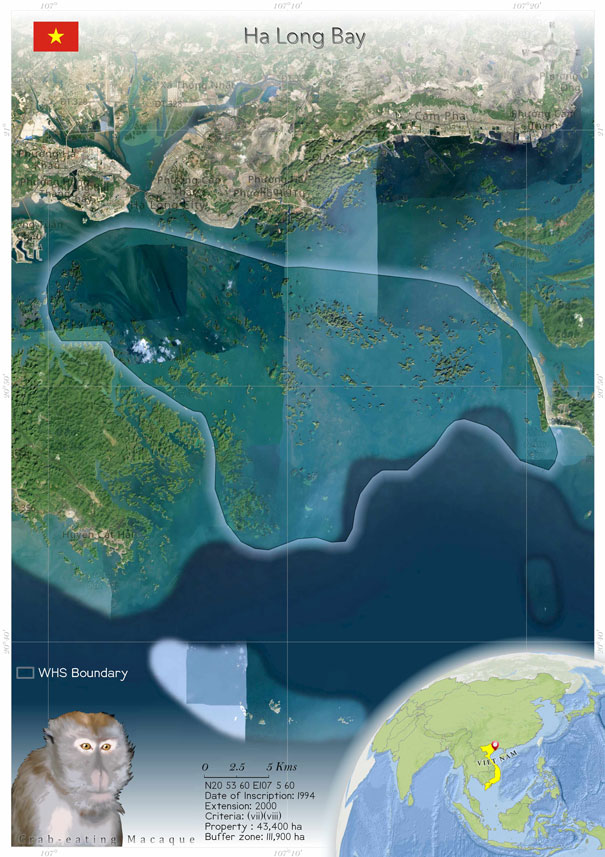
Ha Long Bay
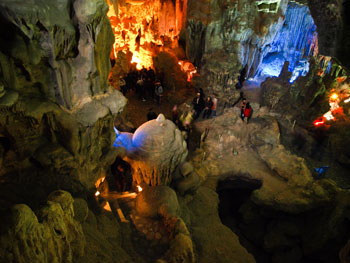 Ha Long Bay is situated in Quang Ninh Province, in the Gulf of Tonkins. It has an extent of around 65,650s ha. The place has many caves, lakes and more than thousand islands within the property. Ha Long Bay is also important from the historical point of view as it is believed that the karst landscape existed even 35 million years ago. The place has very different karst terrains, which can be as deep as 25 m under the sea and as long as 400 m. The limestone island has seven different ecosystems in the sea, which is home to different species. A total of 4622 species have been recorded in the park, of which 2158 are marine species. According to the State of Conservation report of 2014, the management of the property has adequate resources, and it is addressing the issues of the park very efficiently. However, the property faces a continuous threat in increasing tourism, an increasing number of residents in the village and unsustainable fishing, which are also being addressed by the management. The World Heritage committee has asked the State Party to increase the income from tourism. According to IUCN World Heritage Outlook, the management is handling the increasing tourism very well now after implementing an improved tourism management plan. The property is under the category of “Good with some concerns” in Outlook. The site is a famous tourist attraction. Thus tourism, being the biggest threat to the property, impacts the OUV of the property and is responsible for issues such as inflation, social problems and environmental degradation. Water pollution and mining are also threats to the property.
Ha Long Bay is situated in Quang Ninh Province, in the Gulf of Tonkins. It has an extent of around 65,650s ha. The place has many caves, lakes and more than thousand islands within the property. Ha Long Bay is also important from the historical point of view as it is believed that the karst landscape existed even 35 million years ago. The place has very different karst terrains, which can be as deep as 25 m under the sea and as long as 400 m. The limestone island has seven different ecosystems in the sea, which is home to different species. A total of 4622 species have been recorded in the park, of which 2158 are marine species. According to the State of Conservation report of 2014, the management of the property has adequate resources, and it is addressing the issues of the park very efficiently. However, the property faces a continuous threat in increasing tourism, an increasing number of residents in the village and unsustainable fishing, which are also being addressed by the management. The World Heritage committee has asked the State Party to increase the income from tourism. According to IUCN World Heritage Outlook, the management is handling the increasing tourism very well now after implementing an improved tourism management plan. The property is under the category of “Good with some concerns” in Outlook. The site is a famous tourist attraction. Thus tourism, being the biggest threat to the property, impacts the OUV of the property and is responsible for issues such as inflation, social problems and environmental degradation. Water pollution and mining are also threats to the property.
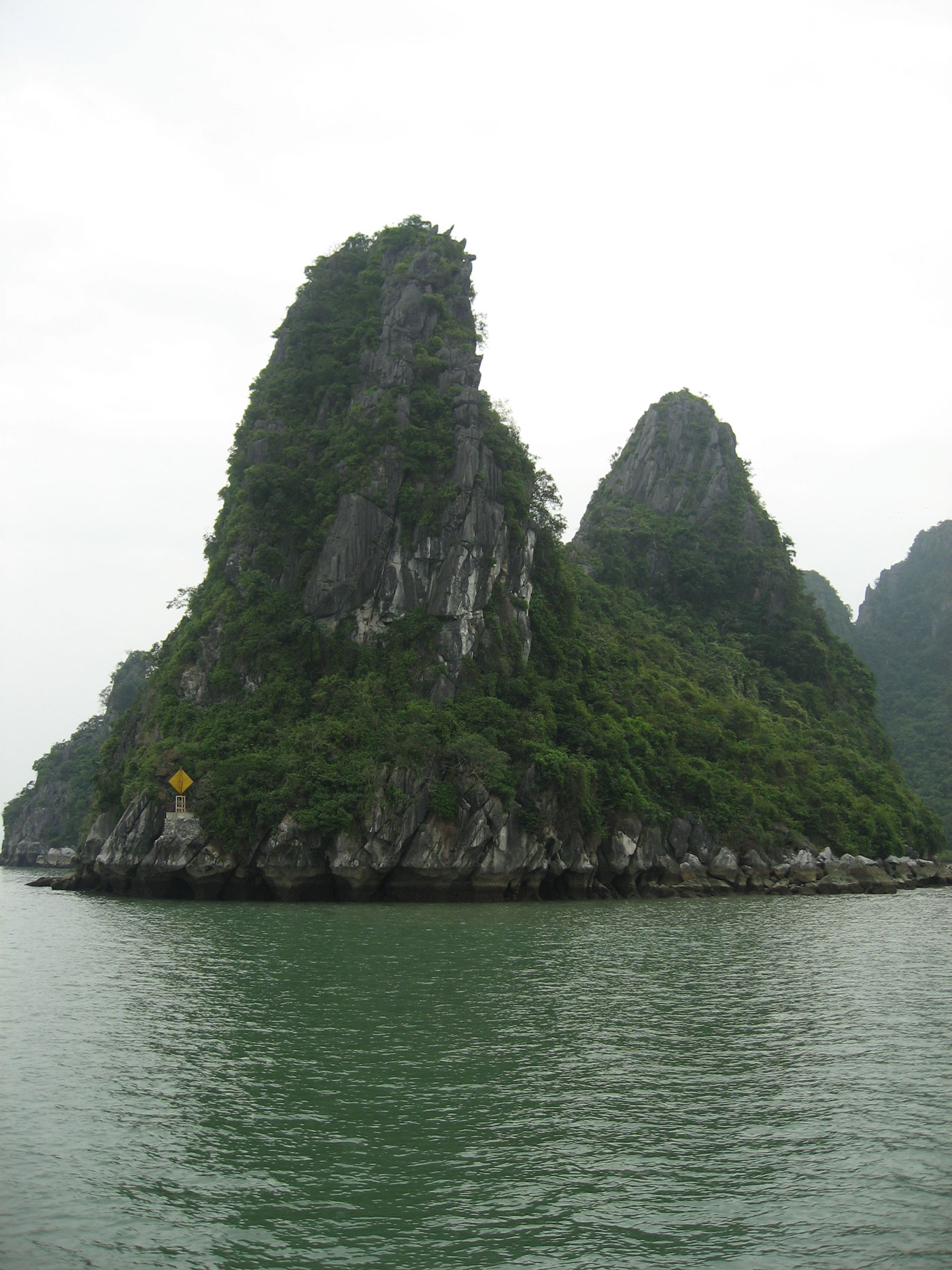 Ha Long Bay - Cat Ba Archipelago is located in the North East of Viet Nam, 165km from Ha Noi, having a total nominated area of 65,650 hectares with 1,133 islands, and surrounded by a buffer zone of 34,140 hectares. The World Heritage Site went through a significant modification of its boundary and revised in 2023. Cat Ba Archipelago of Cat Hai District, Hai Phong City, including Cat Ba Biosphere Reserve, Cat Ba National Park, contributes an area of 22,250 hectares to the nominated World Heritage with 358 islands, in which Cat Ba Island (also known as Pearl Island) is the most important area of Cat Hai district. Ha Long Bay - Cat Ba Archipelago is the most remarkable and extensive example of karst terrain invaded by the sea and is globally significant for its karst tower landscapes (fenglin) and peak-cluster depressions (fengcong). This region uniquely features karst landscapes with linear valleys submerged in seawater (known as "tùng") and circular cockpits flooded by the sea ("áng"). The area is also notable for its caves, which include three main types: ancient marine notch caves, old karstic foot caves, and notch caves. This region exemplifies large-scale karst formation processes and showcases a prolonged period of geological evolution. Cai Bau are among the larger islands, which have 40 saltwater lakes (Cerrano et al. 2006). The place is rich in geomorphic features, including unique ones, ecosystems and biodiversity (Pham 2014). Ha Long Bay is the most spacious and best-developed area of tower karst in the world. The place is also historically important. It is believed that the area is from the middle of the Tertiary Period (almost 35 million years ago) (Cerrano et al. 2006).
The property's biological interest is the acclamation of its extraordinary beauty. The area is attractive because of the limestone terrain, which is submerged into the sea, forming various magnificent cones and towers. Its unique properties for the eroding process of the foot of the islands. Ha Long Bay is also famous for its historical significance and archeological remains, and the Vietnamese people have myths and legends about it (Pham 2014). The place is also the best example of typical tropical and sub-tropical karst limestone islands. It has extensive tropical rainforests, mangrove forests, caves, saltwater lakes (sea lakes), tidal zones and corals on the limestone islands (Thung et al. 2019). The place has one of the prominent and most significant patterns about cones and tower karst terrain formed by sea erosion, making it distinguished and one of the most critical areas on the tower karst terrains. The highest calcareous islands are as high as 400 m, and the greatest depths are 25 m (Cerrano et al. 2006).
Ha Long Bay - Cat Ba Archipelago is located in the North East of Viet Nam, 165km from Ha Noi, having a total nominated area of 65,650 hectares with 1,133 islands, and surrounded by a buffer zone of 34,140 hectares. The World Heritage Site went through a significant modification of its boundary and revised in 2023. Cat Ba Archipelago of Cat Hai District, Hai Phong City, including Cat Ba Biosphere Reserve, Cat Ba National Park, contributes an area of 22,250 hectares to the nominated World Heritage with 358 islands, in which Cat Ba Island (also known as Pearl Island) is the most important area of Cat Hai district. Ha Long Bay - Cat Ba Archipelago is the most remarkable and extensive example of karst terrain invaded by the sea and is globally significant for its karst tower landscapes (fenglin) and peak-cluster depressions (fengcong). This region uniquely features karst landscapes with linear valleys submerged in seawater (known as "tùng") and circular cockpits flooded by the sea ("áng"). The area is also notable for its caves, which include three main types: ancient marine notch caves, old karstic foot caves, and notch caves. This region exemplifies large-scale karst formation processes and showcases a prolonged period of geological evolution. Cai Bau are among the larger islands, which have 40 saltwater lakes (Cerrano et al. 2006). The place is rich in geomorphic features, including unique ones, ecosystems and biodiversity (Pham 2014). Ha Long Bay is the most spacious and best-developed area of tower karst in the world. The place is also historically important. It is believed that the area is from the middle of the Tertiary Period (almost 35 million years ago) (Cerrano et al. 2006).
The property's biological interest is the acclamation of its extraordinary beauty. The area is attractive because of the limestone terrain, which is submerged into the sea, forming various magnificent cones and towers. Its unique properties for the eroding process of the foot of the islands. Ha Long Bay is also famous for its historical significance and archeological remains, and the Vietnamese people have myths and legends about it (Pham 2014). The place is also the best example of typical tropical and sub-tropical karst limestone islands. It has extensive tropical rainforests, mangrove forests, caves, saltwater lakes (sea lakes), tidal zones and corals on the limestone islands (Thung et al. 2019). The place has one of the prominent and most significant patterns about cones and tower karst terrain formed by sea erosion, making it distinguished and one of the most critical areas on the tower karst terrains. The highest calcareous islands are as high as 400 m, and the greatest depths are 25 m (Cerrano et al. 2006).
Criterion (vii)
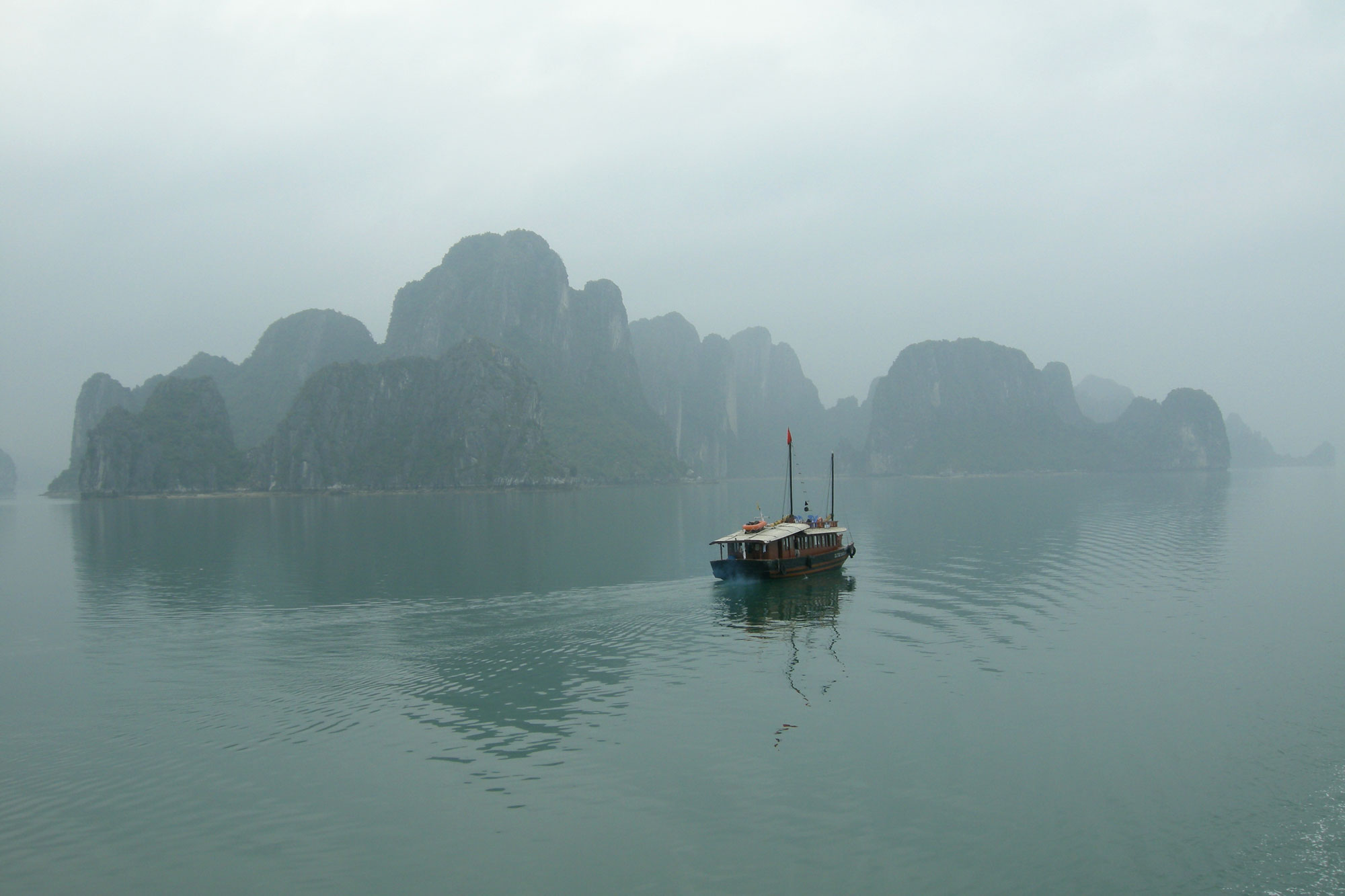 Comprised of a multitude of limestone islands and islets rising from the sea, in a variety of sizes and shapes and presenting picturesque, unspoiled nature, Ha Long Bay is a spectacular seascape sculpted by nature. The property retains a high level of naturalness, and despite its long history of human use, is not seriously degraded. Outstanding features of the property include the magnificent towering limestone pillars and associated notches, arches and caves, which are exceptionally welldeveloped and among the best presented of their type in the world.
Comprised of a multitude of limestone islands and islets rising from the sea, in a variety of sizes and shapes and presenting picturesque, unspoiled nature, Ha Long Bay is a spectacular seascape sculpted by nature. The property retains a high level of naturalness, and despite its long history of human use, is not seriously degraded. Outstanding features of the property include the magnificent towering limestone pillars and associated notches, arches and caves, which are exceptionally welldeveloped and among the best presented of their type in the world.
Criterion (viii)
As the most extensive and best-known example of marine-invaded tower karst in the world Ha Long Bay is one of the world’s most important areas of Fengcong (clusters of conical peaks) and Fenglin (isolated tower features) karst. Abundant lakes, occupying drowned dolines, are one of the distinctive features of the Fencong karst, with some appearing to be tidal. Possessing a tremendous diversity of caves and other landforms derived from the unusual geomorphological process of marine invaded tower karst the caves are of three main types: remnants of phreatic caves; old karstic foot caves and marine notch caves. The property also displays the full range of karst formation processes on a very large scale and over a very long period of geological time, possessing the most complete and extensive exzample of its type in the world and providing a unique and extensive reservoir of data for the future understanding of geoclimatic history and the nature of karst processes in a complex environment.
Status
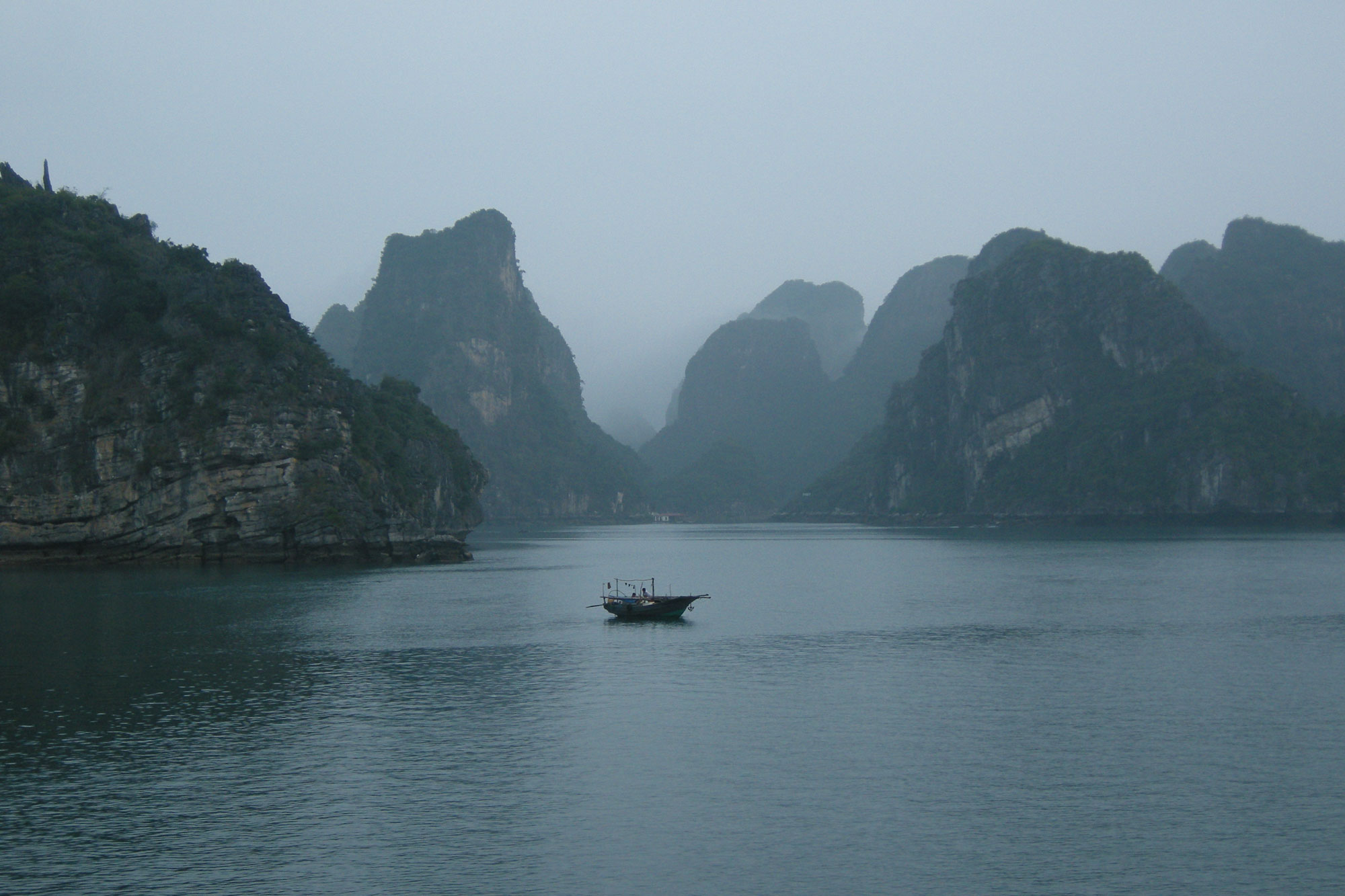 Ha Long Bay was recognized as a historical and cultural relict and was established as a National Landscape Site in 1962 (UNESCO whc.unesco.org). The Management Department was set up in 1995 with around 150 employees. The employees serve in the caves and offices. They also serve as tourist guides. The management protects the park and looks after the research and development in the area (Galla 2002). In 2009 the site was declared a unique National Landscape Site under the Cultural Heritage Law amendment. The property is under the control of the provincial government, protected by various laws such as the Cultural Heritage Law, the Bio-Diversity Law and the Tourism Law (UNESCO whc.unesco.org).
In the IUCN World Heritage Outlook 2020 Assessment, the property falls under the category of "Good with some concerns." It was challenging for the management to keep track of tourism activities before, but now it has come up with the improved tourism management plan. However, the park faces challenges related to funds, poor law enforcement and poor cooperation and support from local authorities. Tourism is a constantly increasing threat to the property, in addition to poor water quality due to water pollution, which has impacted the OUV of the property. There is a need for research to document the effects of tourism and climate change on the property as mentioned by the IUCN in World Heritage Outlook report in 2020.
The place is a famous tourist attraction. In 1990, Vietnam opened up for international tourism under Doi Moi. According to data provided by the Cultural Office, 1.7 million people visited the bay in 2002 (Pham 2014). In 2012, the site received 3.1 million visitors (Hampton et al. 2018).
The residents had identified issues caused by tourism such as inflation, social problems and environmental degradation (Pham 2014). Khuong and Uyen (2016) reported that the tourists visiting Ha Long Bay would gain satisfaction from a better cultural factor, entertainment, infrastructure, safety and security. They suggested that the tourist managers improve the entertainment options by building a combination of amusement facilities with casinos, high-quality bars and clubs, etc. (Khuong & Uyen 2016).
Ha Long Bay was recognized as a historical and cultural relict and was established as a National Landscape Site in 1962 (UNESCO whc.unesco.org). The Management Department was set up in 1995 with around 150 employees. The employees serve in the caves and offices. They also serve as tourist guides. The management protects the park and looks after the research and development in the area (Galla 2002). In 2009 the site was declared a unique National Landscape Site under the Cultural Heritage Law amendment. The property is under the control of the provincial government, protected by various laws such as the Cultural Heritage Law, the Bio-Diversity Law and the Tourism Law (UNESCO whc.unesco.org).
In the IUCN World Heritage Outlook 2020 Assessment, the property falls under the category of "Good with some concerns." It was challenging for the management to keep track of tourism activities before, but now it has come up with the improved tourism management plan. However, the park faces challenges related to funds, poor law enforcement and poor cooperation and support from local authorities. Tourism is a constantly increasing threat to the property, in addition to poor water quality due to water pollution, which has impacted the OUV of the property. There is a need for research to document the effects of tourism and climate change on the property as mentioned by the IUCN in World Heritage Outlook report in 2020.
The place is a famous tourist attraction. In 1990, Vietnam opened up for international tourism under Doi Moi. According to data provided by the Cultural Office, 1.7 million people visited the bay in 2002 (Pham 2014). In 2012, the site received 3.1 million visitors (Hampton et al. 2018).
The residents had identified issues caused by tourism such as inflation, social problems and environmental degradation (Pham 2014). Khuong and Uyen (2016) reported that the tourists visiting Ha Long Bay would gain satisfaction from a better cultural factor, entertainment, infrastructure, safety and security. They suggested that the tourist managers improve the entertainment options by building a combination of amusement facilities with casinos, high-quality bars and clubs, etc. (Khuong & Uyen 2016).
